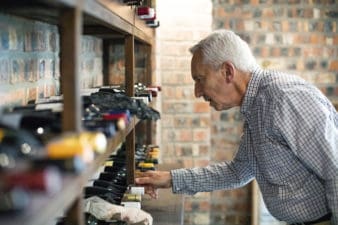With Husky Energy’s (TSX: HSE) four-year-old repositioning strategy now firmly paying dividends, the company is open to making a major transformational acquisition. But it is not only this development, or even its solid balance sheet, diversified portfolio of projects, growing cash flows, or tasty dividend yield of over 3% that makes the company attractive to investors.
Husky has two key assets that hold considerable long-term growth potential, making it a must-have investment for any growth-oriented share portfolio. So let’s take a closer look at those assets and the promise they hold.
1. A strong and growing presence in Asia
Unlike the majority of its Canadian peers, Husky has a particularly strong presence in Asia. It has exploration and production assets located offshore of China and Indonesia, which are particularly important because they give it access to these lucrative energy markets.
China has already overtaken the U.S. to become the world’s largest net importer of crude, and it, along with southeast Asia, is expected to become the global driver of energy demand over the next 25 years.
Of Husky’s assets in the region, the most critical at this time is the Liwan natural gas project located in the South China Sea. Husky has a 49% working interest in the project, with the remainder held by China’s CNOOC (TSX: CNU)(NYSE: CEO). It is the first deep water gas project offshore of China and Husky’s largest project to date, giving it access to the lucrative Chinese energy market. Even more importantly, the partnership with CNOOC gives Husky a partner with deep pockets, and one that is familiar with the convoluted nature of doing business in China.
The project delivered first gas in March of this year, with production during 2014 expected to be between 250 and 300 million cubic feet daily. More promising is that Husky and CNOOC have secured a contract that sets the price paid for natural gas from $11 to $13 per thousand cubic feet. This represents a significant premium over the current NYMEX price for natural gas, which is almost 2.5 times greater, boding well for Husky’s profitability from the project.
More impressively, there are two additional fields yet to be fully developed and commence production. These fields are expected to produce first gas between the second half of 2014 and 2016, with the potential to expand production to as high as 500 million cubic feet daily.
Husky’s share of total gas and natural gas liquids sales is expected to be 32,000 barrels of crude equivalent daily, which is a 10% increase over Husky’s average daily production in the first quarter of 2014.
This highlights the remarkable potential of this project for Husky and the significant contribution it can make to the company’s bottom line.
2. Husky’s Atlantic assets hold considerable promise
The next key assets that hold considerable promise, which Husky defines as core assets, are those in the Atlantic Ocean. These assets are comprised of a 72.5% interest in the White Rose field and a 68.75% interest in the South and West White Rose fields, as well as the North Amethyst field. It also holds a 13% working interest in the Terra Nova field, operated by Suncor Energy (TSX: SU)(NYSE: SU), which has a 37.68% interest.
These assets are important because they give Husky access to light crude with its sale price benchmarked to Brent, which trades at a premium to West Texas Intermediate. Over the last year this premium has typically been between 3% and 15% and is currently at around 6%, giving Husky higher margins on the crude produced from these assets. It also gives Husky access to European energy markets, reducing dependence on oil exports to the U.S. This is important as the U.S. is becoming an increasingly saturated market due to exponential growth in light crude production thanks to the shale oil boom.
More importantly, Husky has a 35% working interest in three Flemish Pass Basin discoveries — the Bay du Nord, Mizzen, and Harpoon discoveries — which it made with its partner, Norway’s Statoil (NYSE: STO). Of these three, Bay du Nord holds the most promise. It is estimated that this discovery alone holds up to 600 million recoverable barrels of light crude. Depending on the results of various appraisal activities, it is estimated that this discovery will come online to commence production around 2020.
The Flemish Pass Basin is fast shaping up as an exciting new frontier for oil and gas drilling, as it’s believed to hold tremendous potential. This bodes well for Husky to continue expanding its oil reserves, while providing it with a long-term development opportunity.
These assets give Husky a clear advantage over many of its peers, with it now able to access the lucrative and increasingly important Chinese energy market. In addition, Husky is gaining increased access to European energy markets at a time when Europe is looking to reduce dependence on Russian energy exports, thereby boosting the proportion of Husky’s sales benchmarked to lucrative Brent pricing.







